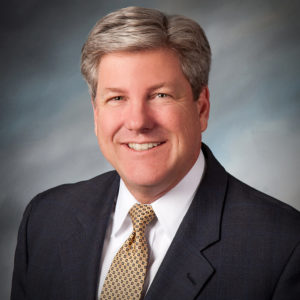Article Originally Released on AdvisorPerspectives
Bob Veres comment:
“The analogy here is that police body cameras created a new level of transparency in law enforcement that make it possible for us to see the hidden side of police brutality and know when the police are lying in their arrest reports. Rostad applauds this transparency, and then says that it would be nice if we could get some of that for the securities industry…. In Form CRS, the SEC talks about the type of fees and expenses that are collected from consumers, when it should be talking about what they pay and the conflicts of interest the advice giver has embraced. The SEC could take a cue from the body cameras.”
Investors need body cameras. The horrifying images of five police officers beating Tyre Nichols were possible only because of the transparency of police body cameras. Words cannot do justice to what happened to Nichols, but they offer a lesson for the need for transparency in the regulation of advice.
Words start with a New York Times story on Sunday. The headline, “For Police, Body Cameras Break Code of Silence.” The part of the story that reminded us why Tyre Nichols is a global story. The Times:
Videos released by the city of Memphis on Friday evening, including police body camera footage and shots from a pole-mounted police camera, show Mr. Nichols crying out for his mother while officers hold him down, kick him in the head, punch him.
“Body camera footage is more routinely made public ….,” according to the mayor of Kansas City, Quinton Lucas. “I think we are seeing a whole new world” regarding the release of any video of incidents.
The former police chief of Tucson, Arizona, Chris Magnus, was quoted regarding past practices of releasing as few videos as possible, “I think that contributed to a climate that built mistrust in the police and a lack of confidence because people felt they were only being fed information when its was good news.”
The Times continued, “Mr. Lucas … said releasing evidence and engaging with residents allow officials to stamp out rumors of officers acting inappropriately …. If you don’t share information, public imagination will take on its own element and you’ll be dealing with that.”
The lesson for advice regulation for retail investors is to improve disclosure and transparency. Advances in technology and greater consumer expectations leave no choice.
Former SEC Commissioner Troy Paredes (2008-2013) reflected traditional SEC thinking on disclosure. In 2003, Paredes, then professor of law at Washington University School of Law, wrote that more disclosure information is not necessarily the answer.
Paredes pointed out that retail investors do not “use the disclosed information effectively.” Further he recommended that securities regulators should focus more on “the user of information,” and concluded, “We get more out of disclosure with less of it.”
But that does not go far enough.
Paredes focused on the quantity of disclosures and suggested too much disclosure is ineffective. He hardly mentioned the quality of disclosure and this lapse came to life in how the SEC has dealt with disclosing Information about fees.
The SEC has also admitted conceptually that fee transparency should be a goal and is what investors want.
Aron Szapiro, head of government affairs at Morningstar, is another proponent for better, faster transparency: “Investors should be able to quickly understand how much they paid for advice, asset management and other fees to invest.”
Yet, when it comes to transparency, Reg BI and CRS only require disclosure of the types of fees and expenses and how customers pay them. They do not speak to what fees and expenses are paid.
How investors pay fees and expenses is called “standardized disclosure” by the SEC. It refers to the type of fees and expenses or whether they are, for example, commissions, AUM or another customer fee.
But merely addressing how fees are paid is laughable. It is akin to a trusted contractor telling you he can renovate your kitchen or bathroom per the plan or proposal but not telling you how much he will charge. He only tells you can pay by check, PayPal or Master Card, and nothing more.
What investors pay in fees and expenses is called “individualized fee disclosure” by the SEC. This refers to the amount of fees and expenses paid by the investor.
Those are huge differences that are overlooked, ignored or misunderstood by the general public. If they were understood, the view that the costs of a major consumer purchase can remain hidden would be roundly rejected.
Muddled language is why this is misunderstood.
On the Form CRS rule, the SEC wrote (page 170), that “Greater fee transparency was a consistent theme of our investor engagement.”
Then, in the very next sentence, we learn that telling investors what they pay in fees and expenses can be irrelevant or rejected by those in a position to disclose the information. The SEC stated, “Individualized fee disclosure may be helpful to some retail customers, but it can be costly, prone to errors, and cause delays in trade execution.”
The SEC noted that nothing in Reg BI prevents a broker-dealer from “providing such individualized disclosure,” and, “we encourage firms to assist retail customers in understanding the specific fees and costs that apply.” In addition, the SEC said to provide “individualized disclosure where appropriate.”
The disdain for investors who want to know what they pay for the products and services they purchase is mind boggling. Advisors are urged to tell customers what they pay only when “appropriate.”
The world only knows of Tyre Nichols because of the transparency in policing from body cameras. Because of this and other incidents, additional police training, resources and interventions have been and will be tried. The lesson for advice regulation may seem far-fetched, but it is not. Video-taped or recorded meetings are here.

